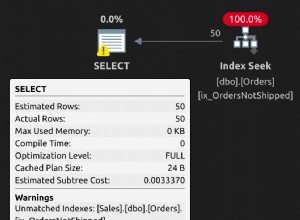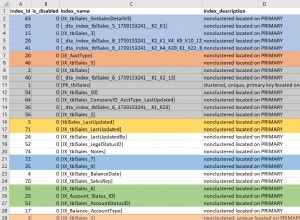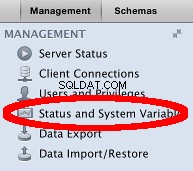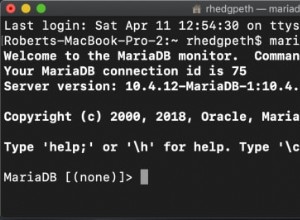Devi conoscere la vecchia posizione prima di poter spostare gli oggetti. E la tua logica deve essere diversa a seconda che l'elemento sia stato spostato in alto o in basso. Lo schema di massima del processo (non testato) è il seguente:
DECLARE @Id INT = 1100000004; -- this id
DECLARE @NewPosition INT = 1; -- needs to have this position
WITH RowToMove AS (
-- using cte instead of variables
SELECT Plan_Id, sequence_no AS OldPosition
FROM planRecords
WHERE Id = @Id
), RowsToUpdate AS (
-- columns used inside set and where clause of the update statement
SELECT Id, sequence_no, OldPosition
FROM planRecords
CROSS JOIN RowToMove
-- select rows that belong to same category and position between old and new
WHERE planRecords.Plan_Id = RowToMove.Plan_Id AND sequence_no BETWEEN
CASE WHEN OldPosition < @NewPosition THEN OldPosition ELSE @NewPosition END AND
CASE WHEN OldPosition > @NewPosition THEN OldPosition ELSE @NewPosition END
)
UPDATE RowsToUpdate SET sequence_no = CASE
WHEN Id = @Id THEN @NewPosition -- this is the row we are moving
WHEN OldPosition < @NewPosition THEN sequence_no - 1 -- row was moved down, move other rows up
WHEN OldPosition > @NewPosition THEN sequence_no + 1 -- row was moved up, move other rows down
END;
Demo su DBFiddle utilizzando le variabili , utilizzando CTE




